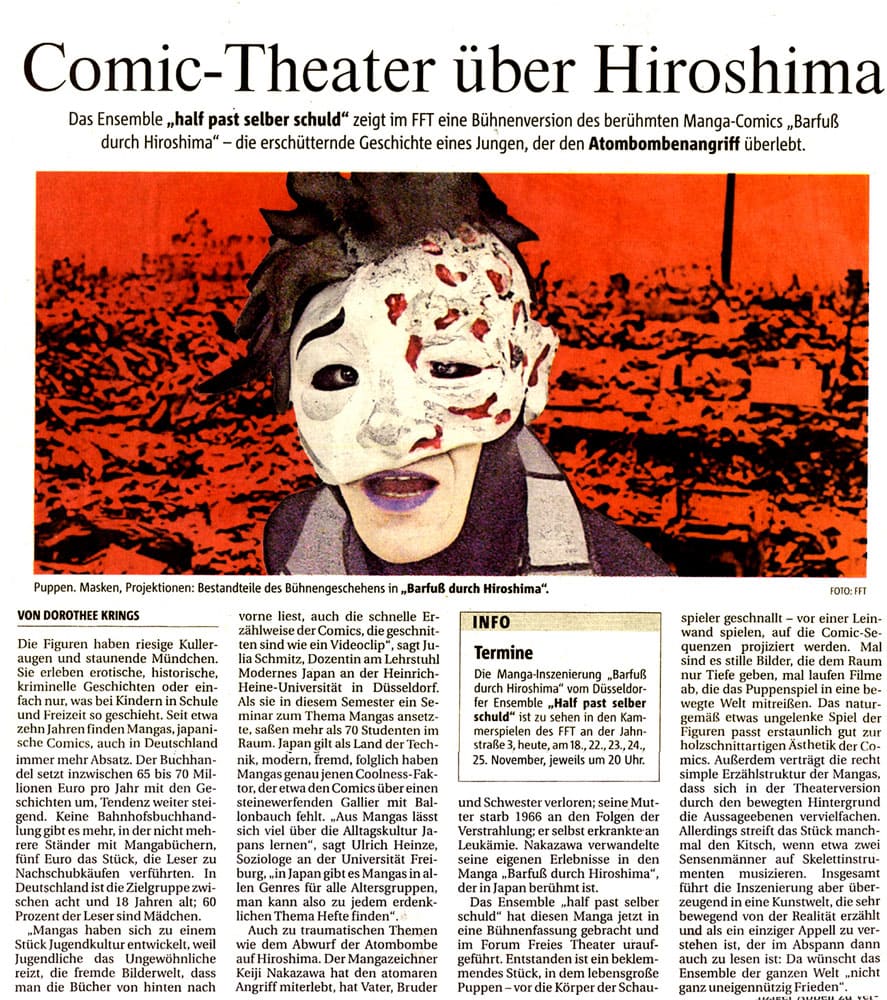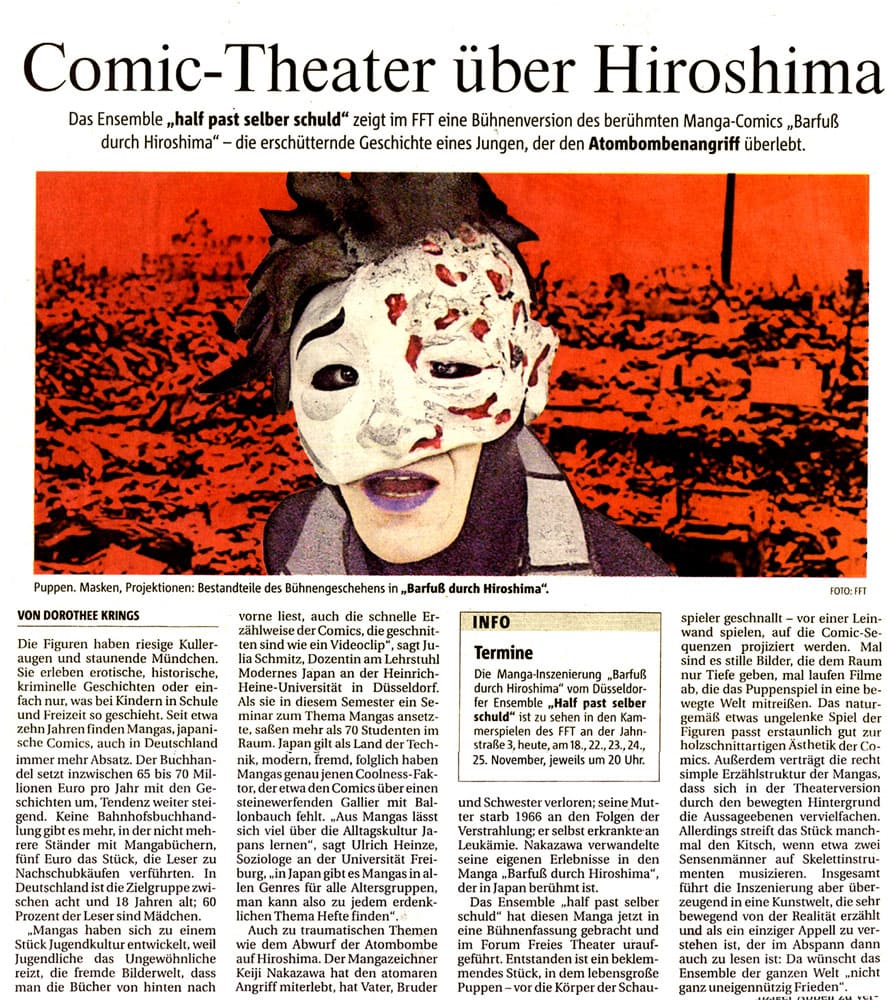
In the FFT, the ensemble „half past selbst guilt“ shows a stage version of the famous manga comic „Barefoot through Hiroshima“ – the harrowing story of a boy who survives the atomic bomb attack.
The figures have huge googly eyes and astonished little mouths. You experience erotic, historical, criminal stories or just what happens to children at school and in their free time. Mangas, Japanese comics, have been selling more and more in Germany for about ten years. The book trade now turns over 65 to 70 million euros a year with the stories, and the trend is rising. There isn’t a train station bookshop anymore that doesn’t have several stands with manga books, five euros each, tempting readers to buy more. In Germany, the target group is between eight and 18 years old; 60 percent of the readers are girls.
„Mangas have developed into a piece of youth culture because young people are attracted to the unusual, the unfamiliar world of images, the fact that you read the books from the back to the front, as well as the quick narrative style of the comics, which are edited like a video clip,“ says Julia Schmitz, lecturer at the Chair of Modern Japan at the Heinrich Heine University in Düsseldorf. When she scheduled a seminar on manga this semester, there were more than 70 students in the room. Japan is considered a country of technology, modern, foreign, so manga have exactly that coolness factor that comics about a Gaul with a balloon belly throwing stones lack. „A lot can be learned about everyday culture in Japan from manga,“ says Ulrich Heinze, a sociologist at the University of Freiburg. „In Japan there are manga in all genres for all age groups,
Also on traumatic topics like the dropping of the atomic bomb on Hiroshima. The manga artist Keiji Nakazawa witnessed the atomic attack, lost his father, brother and sister; his mother died in 1966 as a result of radiation; he himself fell ill with leukemia. Nakazawa turned his own experiences into the manga Barefoot Hiroshima, which is famous in Japan.
The ensemble „half past selbst guilt“ has now brought this manga into a stage version and premiered it in the Forum Freies Theater. The result is an oppressive piece in which life-size puppets – strapped to the actors‘ bodies – play in front of a screen on which comic sequences are projected. Sometimes there are still images that only give the space depth, sometimes films are shown that carry the puppet show into a moving world. The naturally somewhat awkward play of the characters fits surprisingly well with the woodcut-like aesthetics of the comics. In addition, the very simple narrative structure of the manga allows for the multiplicity of statements in the theater version due to the moving background. However, the piece sometimes touches on kitsch, for example when two grim reapers make music on skeletal instruments.
Caption: Dolls. Masks, projections: components of the action on stage in „Barefoot through Hiroshima“. Photo FFT.
To the masks .

